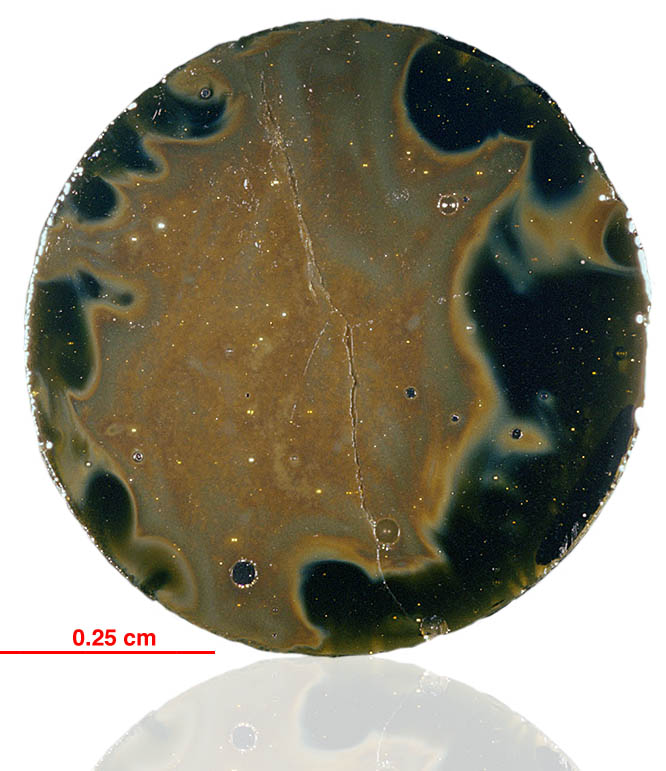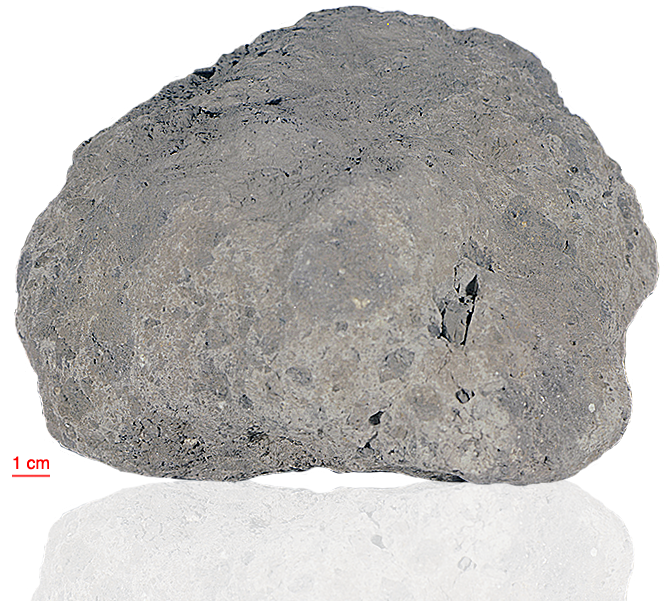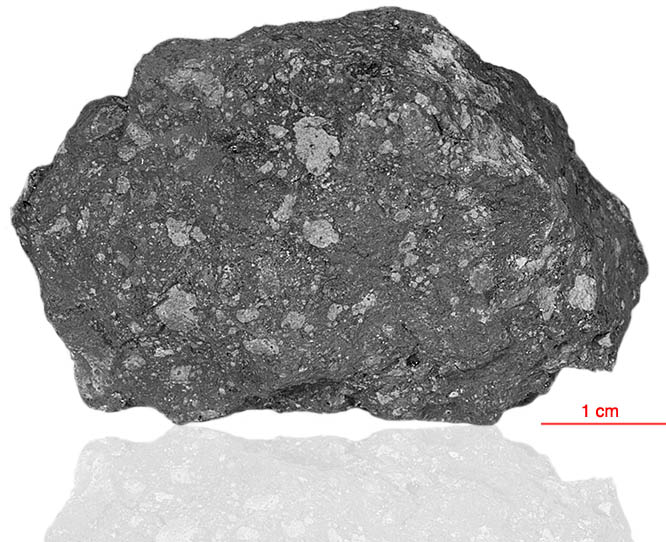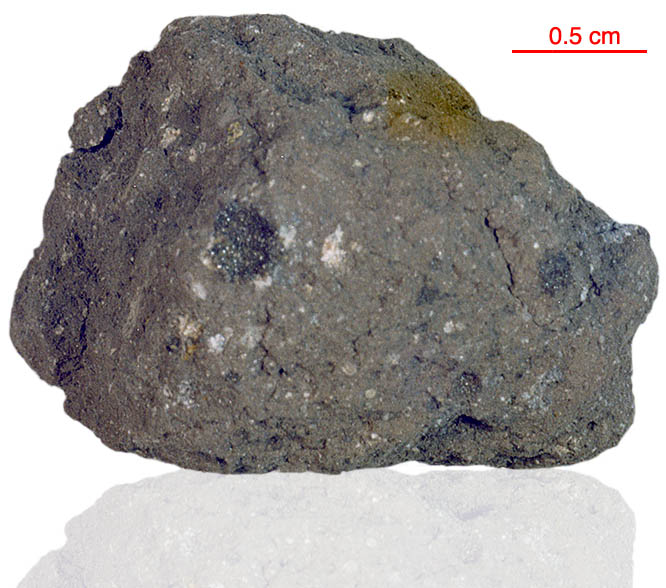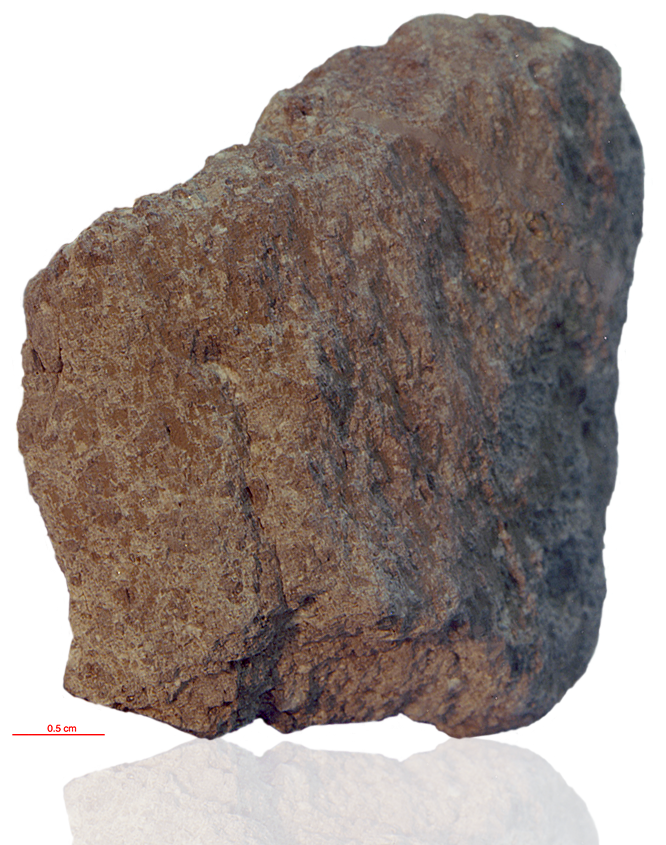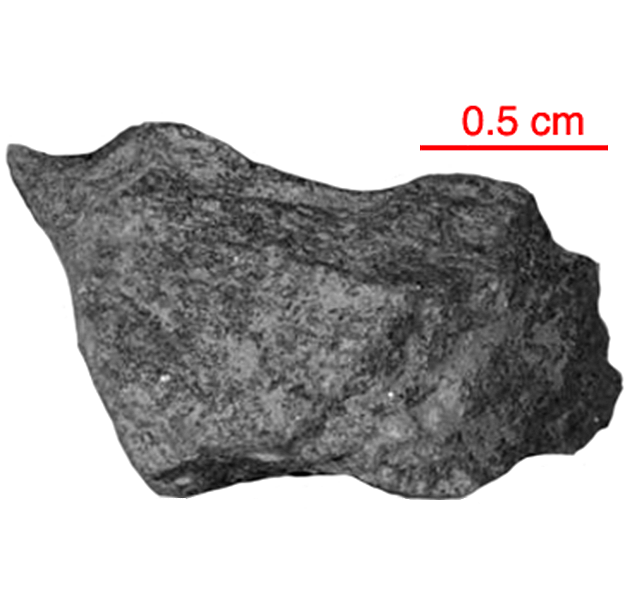
Fact sheet
14074, 14077, 14078 and 14079 are feldspathic KREEP basalts. They are similar to 14073 from the same location. All are holocrystalline sub-ophitic olivine basalts with an abundance of lath-shaped plagioclase crystals.
The sample weighed 2.77 grams before analysis. It has not been dated.
KREEP is an acronym built from the letters K (the atomic symbol for potassium), REE (Rare Earth Elements) and P (for phosphorus). It is a geochemical component of some lunar impact breccia and basaltic rocks.
Further details of this and other Apollo samples are here: http://curator.jsc.nasa.gov/lunar/
The Apollo 14 landing site was in a region formed by impact-basin debris.
Most of the 42 kilograms of rocks and soil collected on Apollo 14 are breccias (rocks that are composed of fragments of other, older rocks). In some cases, the rock fragments that form a breccia are themselves breccias. Such rocks obviously have experienced complex histories with multiple generations of impact events. Some breccias were heated enough that some of the material in the rock was melted.
Apollo 14 was launched on 31 January 1971.

